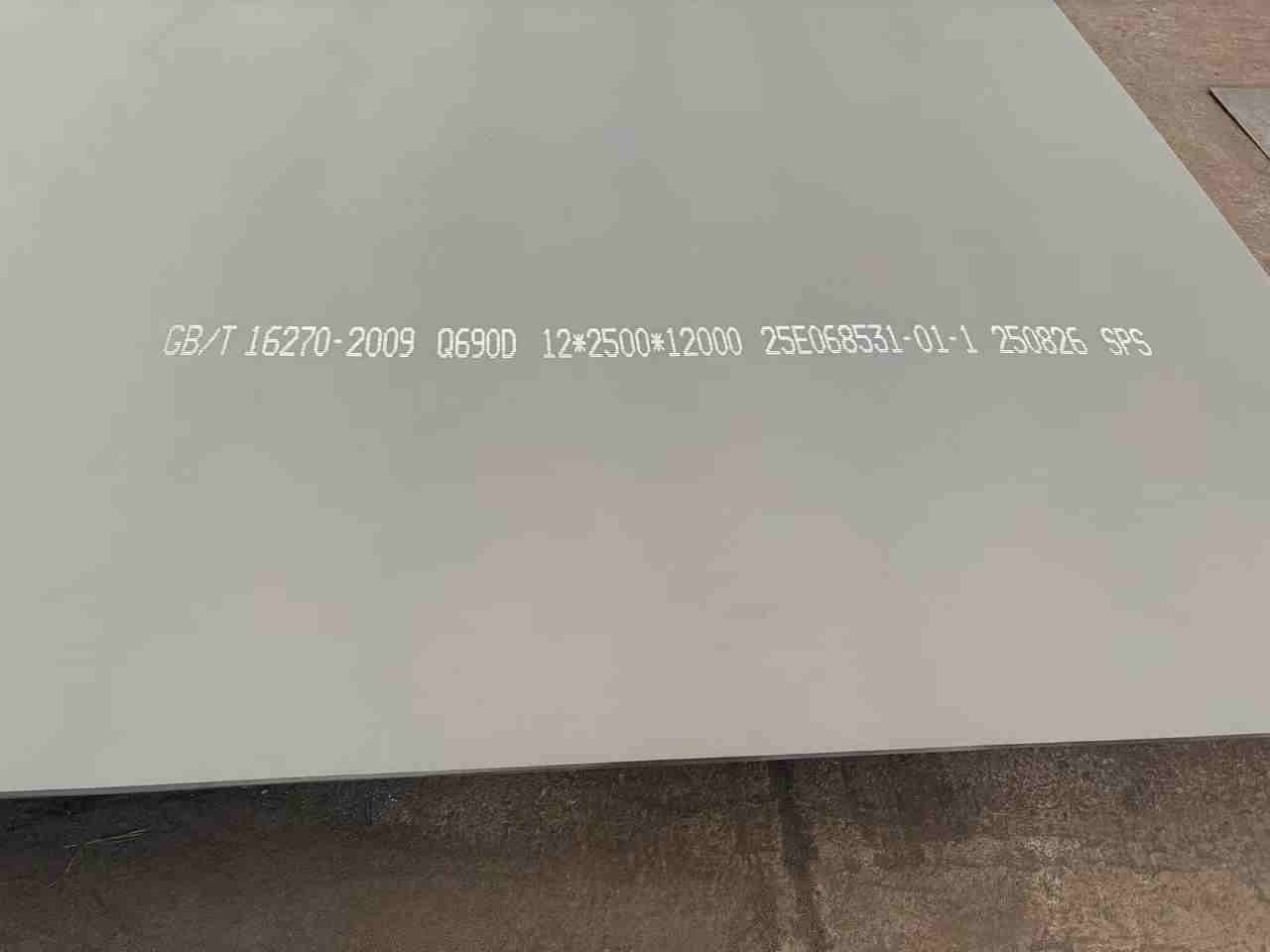Product List
Gangsteel Material Solution
Email: admin@gangsteel.com
Sales: jack@gangsteel.com
The density of SA 516 Gr 70, a carbon steel plate grade under ASME SA-516 for pressure vessels, is a critical property for engineers calculating weight in applications like boilers and storage tanks. The SA 516 Gr 70 density is approximately 7850 kg/m³ (7.85 g/cm³), typical for carbon steels with low alloy content. This article details the density, its implications for design, chemical composition, mechanical properties, and applications, with comparisons to related grades like ASME SA 516 Gr 65, ASME SA 516 Gr 60, and ASME SA 516 Gr 55, addressing the core keyword sa 516 gr 70 density in kg m3. For more details, visit our ASME SA 516 Gr 70 steel plate.
The density of SA 516 Gr 70 is 7850 kg/m³ (7.85 g/cm³), consistent with most carbon steels used in pressure vessel applications. This value is derived from its iron-based composition with minimal alloying elements, ensuring uniformity across thicknesses and heat treatments.

The chemical composition of SA 516 Gr 70 contributes to its standard density:
|
Element |
Heat Analysis (max %) |
Product Analysis (max %) |
|---|---|---|
|
Carbon (C) |
0.27 |
0.31 |
|
Manganese (Mn) |
0.85-1.20 |
0.79-1.30 |
|
Phosphorus (P) |
0.025 |
0.035 |
|
Sulfur (S) |
0.015 |
0.040 |
|
Silicon (Si) |
0.15-0.40 |
0.13-0.45 |
Key Elements:
Carbon Equivalent (CEV): Typically ≤0.43%, calculated as CEV = C + Mn/6 + (Cr + Mo + V)/5 + (Ni + Cu)/15, supports weldability without impacting density.
The mechanical properties of SA 516 Gr 70 complement its density for high-pressure applications:
|
Thickness (mm) |
Yield Strength (min, ksi/MPa) |
Tensile Strength (ksi/MPa) |
Elongation (min, %) |
Impact Toughness @ -46°C (min, ft-lb/J) |
|---|---|---|---|---|
|
≤25 |
38/260 |
70-90/485-620 |
27 |
20/27 |
|
25<t≤50 |
37/255 |
70-90/485-620 |
25 |
20/27 |
|
50<t≤100 |
36/250 |
70-90/485-620 |
23 |
20/27 |
|
>100 |
34/235 |
70-90/485-620 |
21 |
20/27 |
The density of 7850 kg/m³ enables accurate weight calculations for structural design, balancing strength and material efficiency.
|
Grade |
Carbon (Heat Analysis, max %) |
Yield Strength (min, ksi/MPa, ≤25 mm) |
Tensile Strength (ksi/MPa) |
Density (kg/m³) |
Applications |
|---|---|---|---|---|---|
|
SA 516 Gr 55 |
0.18 |
30/205 |
55-75/380-515 |
7850 |
Low-pressure vessels |
|
SA 516 Gr 60 |
0.21 |
32/220 |
60-80/415-550 |
7850 |
Moderate-pressure tanks |
|
SA 516 Gr 65 |
0.24 |
35/240 |
65-85/450-585 |
7850 |
High-strength vessels |
|
SA 516 Gr 70 |
0.27 |
38/260 |
70-90/485-620 |
7850 |
High-pressure vessels |
Key Note: All SA 516 grades share the same density (7850 kg/m³) due to similar low-alloy compositions, but SA 516 Gr 70 has higher strength than Gr 55, Gr 60, and Gr 65, making it suitable for higher-pressure applications.
The SA 516 Gr 70 density does not affect its weldability:
The low carbon content and CEV ensure robust welds, supporting structural integrity.
The SA 516 Gr 70 density supports applications in:
Explore ASME SA 516 Gr 65 for slightly lower strength needs.
Gangsteel supplies SA 516 Gr 70:
To leverage the SA 516 Gr 70 density effectively, use this formula: Weight (kg) = Density (7850 kg/m³) × Volume (m³)
Example 1: Basic Plate Weight For a standard plate: Length = 2 m, Width = 1.5 m, Thickness = 20 mm (0.02 m). Volume = 2 × 1.5 × 0.02 = 0.06 m³. Weight = 7850 × 0.06 = 471 kg. Pro Tip: Use this for quick bids—Gangsteel provides free weight calculators on request.
Example 2: Cylindrical Vessel Shell For a pressure vessel shell: Diameter = 1 m (radius 0.5 m), Height = 3 m, Thickness = 15 mm (0.015 m). Surface Area ≈ π × Diameter × Height = 3.14 × 1 × 3 = 9.42 m². Volume = Surface Area × Thickness = 9.42 × 0.015 ≈ 0.1413 m³. Weight = 7850 × 0.1413 ≈ 1,110 kg. Advanced Insight: Factor in corrosion allowance (e.g., +2 mm) for long-term service in corrosive environments like LNG storage.
[Insert Chart Placeholder: Interactive density vs. thickness graph for SA 516 Gr 70, showing weight trends. Alt text: "Density calculation chart for SA 516 Gr 70 plates"]
These calculations highlight how the SA 516 Gr 70 density supports efficient designs, reducing material overuse by up to 15% compared to denser alloys.
ASTM A516 GR 70 equivalent materials is such as ASME SA516 GR 70, EN 10028 P355GH, and BS1501 224-490 A & B, sh
we supply high-quality A516 Gr 70 steel plate for pressure vessel applications and other standards like ASTM A2
EN10028-2 P355GH for High-Strength Low-Alloy Columbium-Vanadium Structural Steel EN10025-2 S355J2 Structural St
We export A240 304L Stainless Coil 2B, NO.1 No.4 surface, the thickness 0.1mm to 3mm, 3mm to 22mm, Mother mill